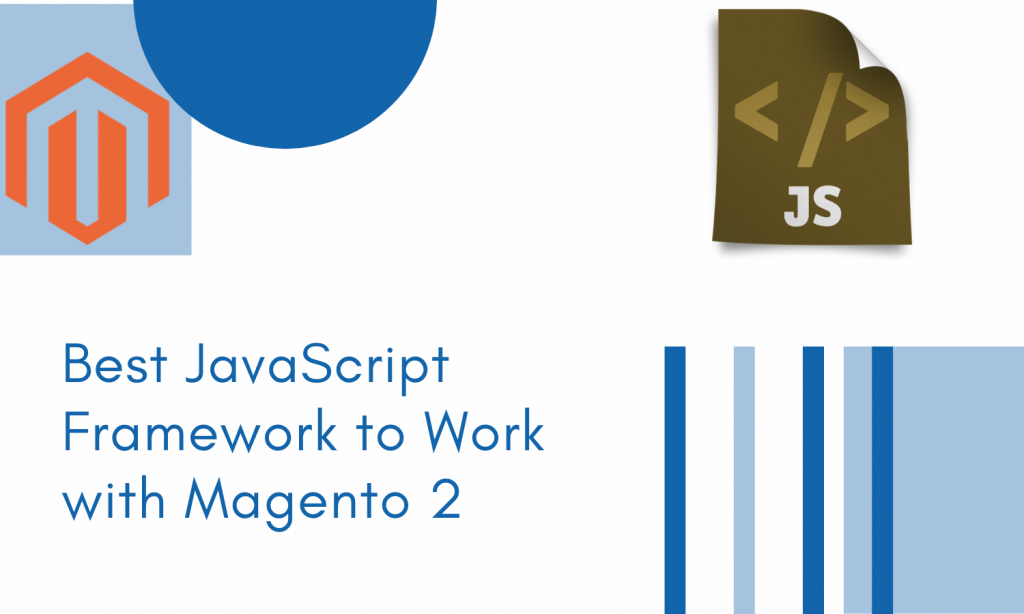
At present, it has become increasingly evident that Magento 2 has entered the e-commerce sphere and it is here to stay for a considerable time period. While there are a number of reasons for the same, enhanced accessibility of the user in the designed store takes the prime position. Indeed, the power of users over his/her Magento 2 store comes from the elaborate JavaScript framework used by the latter.
Moving on from the limitations of jQuery, Magento 2 has come to adopt many other JavaScript frameworks that can help in making it a more interactive e-commerce platform. The Prototype being one of the JavaScript frameworks, associated with Magento 2, blurs the reputation of others that have come to simplify its processes. Here is a list of some of the JavaScript frameworks that easily assimilate with Magento 2:
- RequireJS
It is unanimously held that RequireJS has earned its popularity amongst the software circles by providing atypical solutions to common day problems. Its primary function in a Magento 2 software is processing JavaScript dependencies asynchronously, as opposed to requiring script tags. This feature helps Magento 2 store developers to load extra JavaScript models in pre-set custom models and for loading other dependencies from the Magento install.
- Knockout
Magento 2 has addressed user grievances (both buyers and sellers) by enhancing its payment, product categorization, and checkout sections. These modifications have been a direct result of the intervention of the Knockout in Magento 2. It supervises the cart filling and checkout steps to ensure a fluid purchase. In order to ease the responsibilities of the developers, Knockout autonomously observes view models and upgrades the DOM without demanding any manual intervention. It is the self-same automaticity of the Knockout framework that makes it a better choice than its earlier counterparts, jQuery, and Prototype. Needless to mention, it is exclusively used for handling single page checkout and cart mini displays.
- AngularJS
Digitalization of nearly every human need has prompted a rise in the number of online customers of businesses. Obviously, internet providers and web controllers facilitate the process. Hence, they must be integrated into the Magento 2 system for improving the experience of its users. AngularJS was designed with the motive of creating web-based installers. Thanks to its dynamicity, AngularJS’s framework can be integrated with RequireJS to enhance its functions. The only disadvantage of using it is that some search bots are visibly unable to locate Magento stores using AngularJS themes.
- jQuery
Magento 1 had quietly established the advantages and limitations of jQuery, as it was the sole JavaScript framework that operated for its software. Presently, DOM manipulations that are not dependent on data models (example banners) function with jQuery. Its simplicity allows developers (and users) to capitalize on strategic add-ons without spending hours on chalking a concrete code as is the case with RequireJS. In addition, jQuery also makes it easier to use the functionality of AJAX requests, thereby allowing for the integration of a sophisticated Magento store.
- Underscore
A relatively less popular but equally effective JavaScript framework is offered by Underscore. It helps in the manipulation of JavaScript arrays, functions, objects, and collections. Even though it may be a redundant framework for immediate use, Underscore can prove to be instrumental for managing arrays. Magento 2 development company has taken the e-commerce world by storm and there are still no limits to the ways in which it can redefine the e-shopping experience. Yet, it is seldom acknowledged that the complimentary JavaScript frameworks offered by third parties to Magento 2 users allow the latter to establish a flawless and secure Magento Store. Nonetheless, in the stimulating environment of the present age, one can only look forward and witness more e-commerce advancements.
